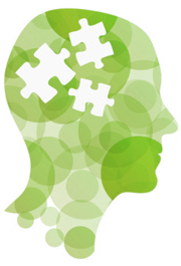EMDR Explained
Posted on 9th January 2018 at 09:20
EMDR stands for Eye Movement Desensitization and Reprocessing. It’s a bit of a mouthful and you would be right in wondering what it’s all about?
It’s a therapy that was developed in the States, originally developed to treat Post-Traumatic Stress Disorder (PTSD) in war veterans. It sill is used for PTSD and works by helping to turn down volume of distressing memories that play on the mind. It is proving to be helpful, also, in the treatment of other trauma memories.
When I use the word ‘trauma’ don’t be put off – it really applies to any event that is aversive or distressing that in all likelihood has left an imprint on our minds. In most cases these memories are stored into our longer-term memory – where we can pull on them as and when we need to and they help to inform us about our thoughts and actions in the here and now.
As I write, I can remember stuff from school that, when I choose to bring it to mind, can cause some mild distress. Note to Miss Hall, Junior 2 teacher - telling a child to stand on a chair is not a good way of letting them know that they must remember to learn their six times table!
However, there are some memories that do not feel neatly stored away and can have a pretty strong visceral feel to them. By that I mean they can still be felt acutely within our emotional and physical selves. They intrude on our day to day and can leave us responding to events in the here and now as if we were back at that time. They can play a part in our ongoing distress.
This therapy helps the person to soften these memories and allow them to be placed in the long-term memory bank so that the person can bring them to mind as and when he or she wishes to.
In EMDR the person works with the therapist to decide on which memories are relevant to work on. The memory in all its forms - a picture (if there is one), feelings and physical sensations - is brought to the attention of the person. They use this as their springboard, at which point they follow the movements of the therapist’s fingers, going from side to side. This allows for the brain to process it in what we call ‘the working memory’.
When we have physical illness or damage, like breaking a leg for instance, the body looks to heal; likewise the brain is always looking to do the same thing , which is to seek balanced emotional and psychological wellbeing and EMDR prompts this process to take place.
For more information go to www.emdrassociation.org.ukt.
Share this post:

